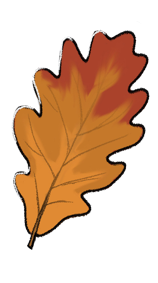Fleas are small, wingless, laterally compressed blood sucking insects. Most fleas are mammalian ectoparasites but a few parasitize birds. About 2400 species are known. Like most parasites, fleas are highly derived and specialized. The mouthparts are adapted for piercing and sucking and mandibles are lacking. The cuticle is sclerotized and hard and the entire body surface is protected by sclerites.
More information
More information
Related categories 4
Sites 16
Popular article about fleas, their evolution and life cycle, and the cat flea Ctenocephalides felis, its host finding and control.
Photographs of the dog flea. Click to enlarge.
Several photographs of the cat flea, its larvae and pupae. Click to enlarge.
Photograph of a flea, with information on its hosts, life cycle and description.
Photographs and a description of this flea, its distribution, life cycle, medical and economic significance and management.
Research project by Hoi King Kwong on these parasites including their classification, morphology, habitat, reproduction, adaptations, nutrition and interactions with other species.
Scanning digital micrograph.
Flea Circuses and performing fleas in history, film and fiction. Including a directory of real and "humbug" flea circus performers.
This article describes these pests, their biology, importance and control measures.
Zoological Institute of Russian Academy of Sciences (St.Petersburg, Russia) presents information on morphology, biology, distribution and importance of fleas (Class Insecta: Order Siphonaptera).
Photographic study by Dave Walker of these insects.
A brief introduction to fleas by UCMP Berkeley, with photograph.
Photograph of the human flea with its identifying features. Click to enlarge.
The characteristics of these wingless insects, their life cycle, feeding and habitat, with illustrations.
Photograph of the sand flea or chigger, with its identifying features. Click to enlarge.
Photograph of this flea. Click to enlarge.
Photograph of a flea, with information on its hosts, life cycle and description.
Scanning digital micrograph.
Photographs and a description of this flea, its distribution, life cycle, medical and economic significance and management.
Popular article about fleas, their evolution and life cycle, and the cat flea Ctenocephalides felis, its host finding and control.
Research project by Hoi King Kwong on these parasites including their classification, morphology, habitat, reproduction, adaptations, nutrition and interactions with other species.
Flea Circuses and performing fleas in history, film and fiction. Including a directory of real and "humbug" flea circus performers.
This article describes these pests, their biology, importance and control measures.
Photograph of this flea. Click to enlarge.
Several photographs of the cat flea, its larvae and pupae. Click to enlarge.
Photograph of the sand flea or chigger, with its identifying features. Click to enlarge.
Photograph of the human flea with its identifying features. Click to enlarge.
Photographs of the dog flea. Click to enlarge.
The characteristics of these wingless insects, their life cycle, feeding and habitat, with illustrations.
Photographic study by Dave Walker of these insects.
A brief introduction to fleas by UCMP Berkeley, with photograph.
Zoological Institute of Russian Academy of Sciences (St.Petersburg, Russia) presents information on morphology, biology, distribution and importance of fleas (Class Insecta: Order Siphonaptera).

Last update:
August 16, 2021 at 5:25:27 UTC

Check out
Regional: Europe: United Kingdom: England: Cumbria: Carlisle: Travel and Tourism: Accommodation: Bed and Breakfast
- Recently edited by merlin1
- Recently edited by merlin1